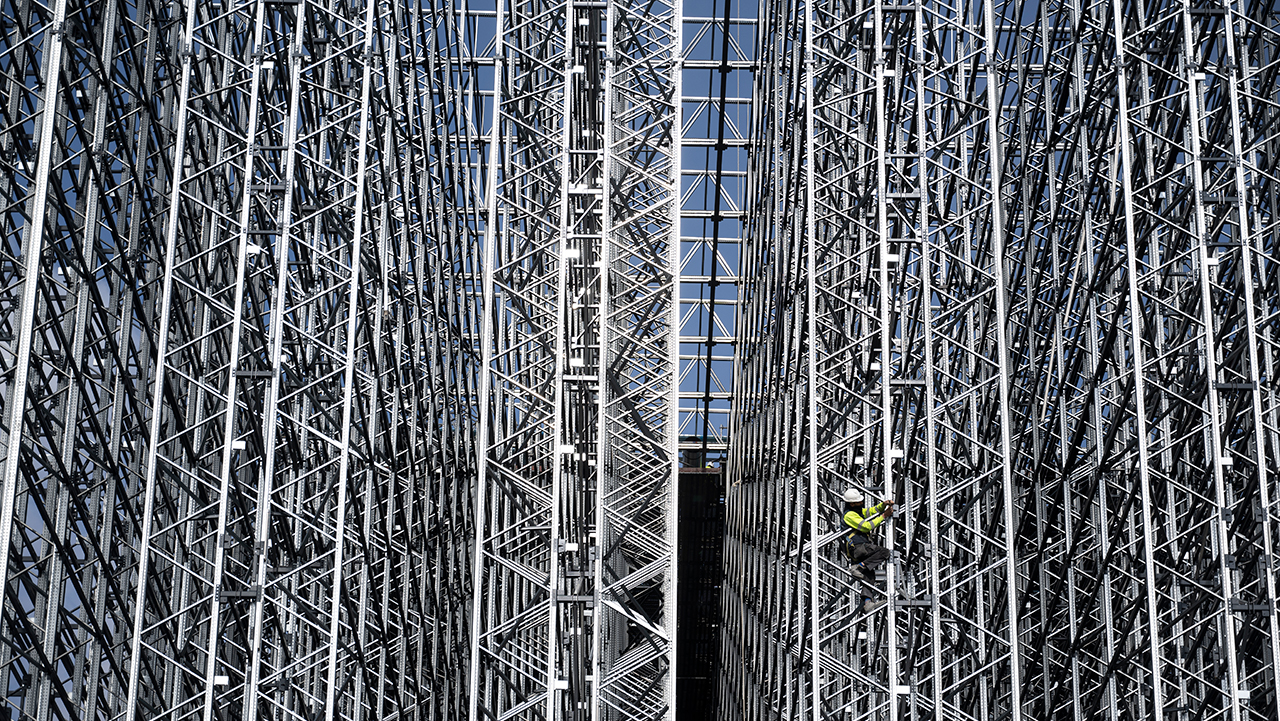"Safety First" as motto. Security is a cross-cutting variable throughout the project

 Back
Back
In the course of a project there are several milestones we set ourselves to follow the plan perfectly. Dates for assembly, installation and commissioning of machinery, tests to ensure that everything works to the millimetre...
But there is a transversal variable, which is present throughout the entire project. Even when our work is finished and we hand over the installation to the client.
Safety.
In our automation projects, the motto "Safety First" is put into practice from the very first moment we start defining a possible customer solution.
This is the way to guarantee that the final project implemented is safe for the end user who will operate the machine. In addition to ensuring the prevention of risks in the previous and subsequent phases linked to the life cycle of this large machine.
Logistics automation projects involve variables such as the use of the volume available for storage and the automatic movement of unit loads.
Due to the very nature of logistics automation projects, the assembly phases of the equipment that make up the project often involve working and/or accessing at heights.
It is also necessary to use work equipment of large dimensions and/or adapted to the compact dimensions of the solutions.
With the application of specific and specialised procedures and risks associated with the concurrence of activities, both in terms of construction work and building interiors.
The start-up phase also incorporates the risks associated with the movement of integrated machinery.
The correct definition and implementation of the safety functions associated with the controlled enclosures of the same must be guaranteed, as well as the means of access that allow for the correct and rapid resolution of incidents in the event of need.
Both in the application of the correct procedures and protocols.
Nor should we forget activities such as cleaning, maintenance or the partial or total relocation and/or dismantling of an installation.
Either due to work associated with re-engineering resulting from the evolution of the customer's needs or to changes or relocations of the work centres themselves.
And all this in combination, sometimes, with specific environmental conditions such as oxygen reduction, ATEX, fresh or frozen chambers, environmental noise in production areas, etc.
All these needs require a specific risk analysis and assessment for each project and client.
This is carried out from 2 sides that end up converging: compliance with the essential health and safety requirements established in the Machinery Directive and with those of the Law on Occupational Risk Prevention and specific regulations applicable depending on the activities to be carried out.
For this reason, all our engineering teams have training and experience in the development and establishment of solutions that eliminate and/or minimise the risks inherent in this type of projects and machines.
Both the mechanical, electrical and automation design teams and the project assembly management and coordination teams, as well as those responsible for innovation and product integration, always apply the maximum possible integration of prevention: from the outset and with a multidisciplinary approach.
